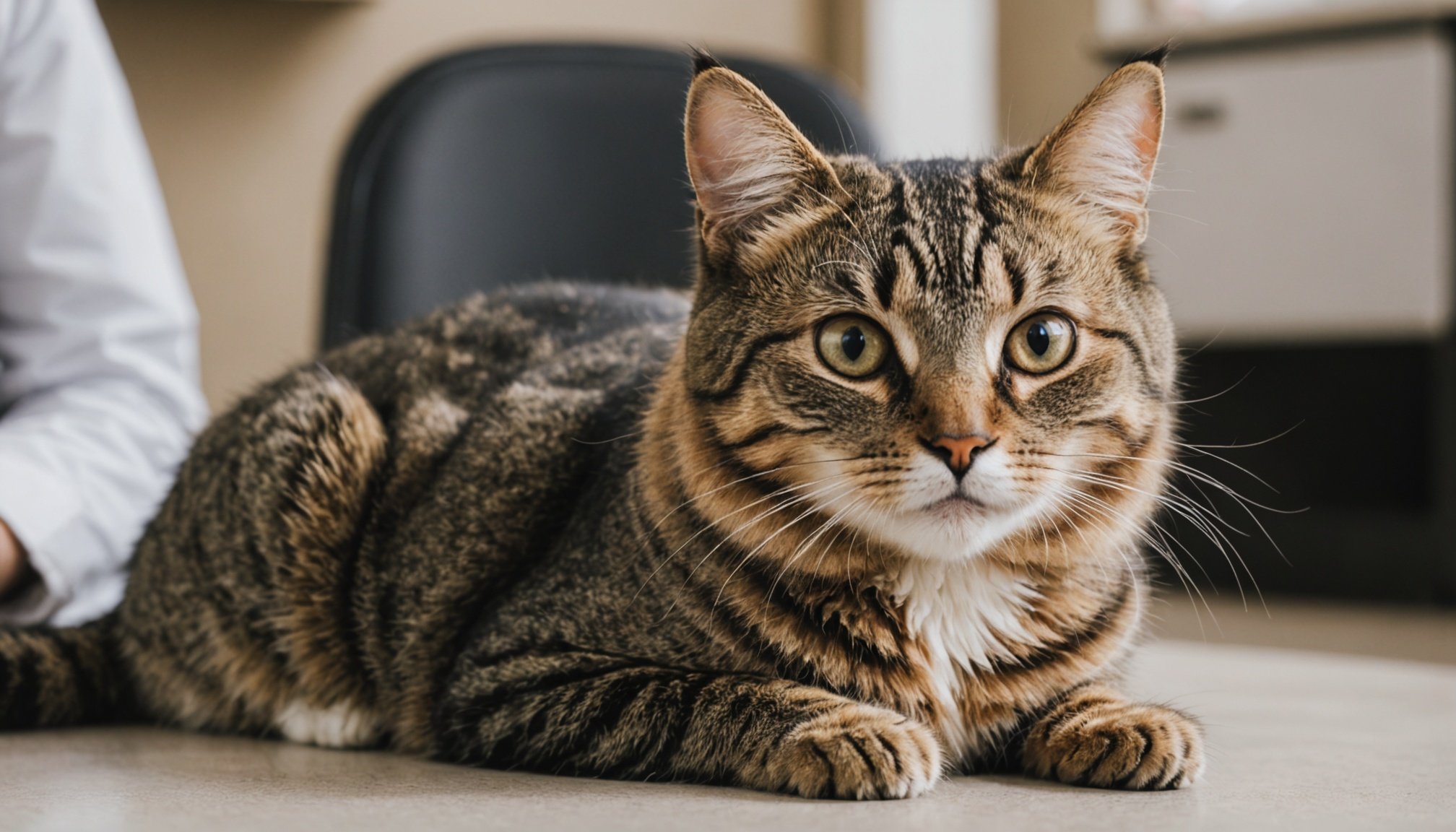Preparing Your Cat for the Vet Visit
Making vet visits stress-free for your cat starts with preparation. Routine vet visits are crucial for your feline’s well-being. Regular check-ups help to catch any health issues early, ensuring your cat leads a healthy, happy life.
Creating a familiar environment at home is the first step. Before the vet visit, introduce the carrier as a positive space. Let your cat explore it at their own pace. You might put the carrier in the living room and add a soft blanket or some favourite toys inside. This familiarity makes the carrier a safe place, not a sign of an impending trip.
Topic to read : Calm your cat: proven techniques for managing feline anxiety during fireworks and thunderstorms
Next, gradually help your cat get comfortable with being in the carrier. Start with short, softly-spoken sessions and reward them with treats or affection. This positive reinforcement builds trust and reduces cage-related anxiety.
It’s useful to practice short car rides, allowing your cat to become accustomed to the motion, so they feel less stress when it’s time for the actual vet trip. Remember, patience and encouragement are key to preparing your cat for a more relaxed vet experience.
In the same genre : Smart approaches to manage your cat”s diet and combat feline obesity
Calming Techniques for Your Feline Friend
Helping your cat relax during vet visits can be a challenge, but employing calming techniques can make the experience smoother. One approach is using natural remedies or pheromone sprays, which help manage anxiety by mimicking the scents cats associate with feeling safe. These products are often available as sprays or diffusers and can create a more relaxed atmosphere for your cat.
Incorporating calming music or sound therapy is another effective method. Soft classical music or specially designed soundtracks can soothe your cat’s nerves, offering them a familiar, gentle background noise. This environment can distract and settle them, alleviating pre-vet visit stress.
Treats and familiarity play a crucial role in anxiety reduction as well. Rewarding your cat with their favourite treats during or after pet carrier or car practice sessions reinforces a positive experience. Additionally, bringing a familiar blanket or toy can provide comforting scents that help mitigate their nervousness.
With these strategies, calming cats becomes more manageable, transforming vet visits into positive, stress-free experiences for both you and your feline companion.
Transportation Tips for A Smooth Vet Experience
Ensuring safe travel is crucial for your cat’s well-being during vet visits. Let’s begin by selecting the right carrier.
Selecting the Right Carrier
Choose a carrier that’s sturdy, well-ventilated, and spacious enough for your feline friend to turn around and lie down comfortably. Hard-shell carriers with secure latches offer better protection and are easier to clean, especially in case of accidents. Line the carrier with a soft blanket to enhance comfort.
Techniques for Secure Transport
To keep your cat settled during travel, cover the carrier with a breathable fabric. This reduces visual stimuli and helps your cat feel more secure. Ensuring the carrier is seat-belted can prevent shifting during turns or stops, minimising stress induced by sudden movements.
Avoiding Motion Sickness
To prevent motion sickness, avoid feeding your cat a few hours before the trip. Keeping the vehicle environment calm by reducing noise and avoiding sudden stops can further alleviate discomfort. Consider having windows down slightly to balance air pressure changes that can cause some cats to feel nauseous.
Making cat transportation less stressful with these strategies can significantly contribute to a smooth vet experience.
Strategies for a Comfortable Vet Appointment
Planning comfortable vet visits involves preparing both yourself and your feline friend. Start by requesting pre-appointment accommodations if your cat has special needs. Communicate with the vet staff in advance about any particular preferences or anxiety issues your cat may have. This forewarning allows the staff to make adjustments that ensure a more seamless appointment.
During the visit, it’s important to manage your own stress. Cats are highly perceptive and can pick up on your anxiety, which may amplify their own. Remain calm and collected, resorting to deep breaths or visualizing positive outcomes. This composure can help maintain a calming energy around your pet.
In the examination room, set your cat on a towel or blanket that carries a familiar scent from home. This small gesture can offer a comforting reminder of their safe space. Additionally, bring their favourite treats to make interactions with the vet a positive experience. Treats can be used both as a distraction and a reward, further encouraging cooperation.
Adopting these pet-friendly practices can make vet visits less daunting and foster a stress-free environment, benefiting both you and your feline companion.
Post-Visit Care and Reflection
After a vet visit, paying attention to post-vet care is essential for your cat’s recovery. Cats can exhibit various behaviours after a trip to the vet, such as hiding, withdrawal, or aggression. Recognising these signs helps you address their needs effectively.
Establishing a comforting routine is crucial. Create a quiet space for your cat to relax. Offer them familiar toys or blankets that carry comforting scents. This can help ease any lingering anxiety, encouraging a swift return to their normal demeanour.
Consider your own reflections on the vet visit. Sharing insights or concerns with fellow cat owners can offer support and new perspectives. This community engagement can provide valuable advice on managing feline recovery, especially if your pet displayed unusual behaviour post-visit.
The key is to remain observant and patient. Remember, some reactions are to be expected, but if they persist or worsen, reaching out to your veterinarian for additional guidance is wise. Veterinary support can confirm whether your cat’s post-visit behaviour is typical or requires further attention. Implementing these strategies can turn potentially stressful experiences into empowering opportunities for growth and understanding.











